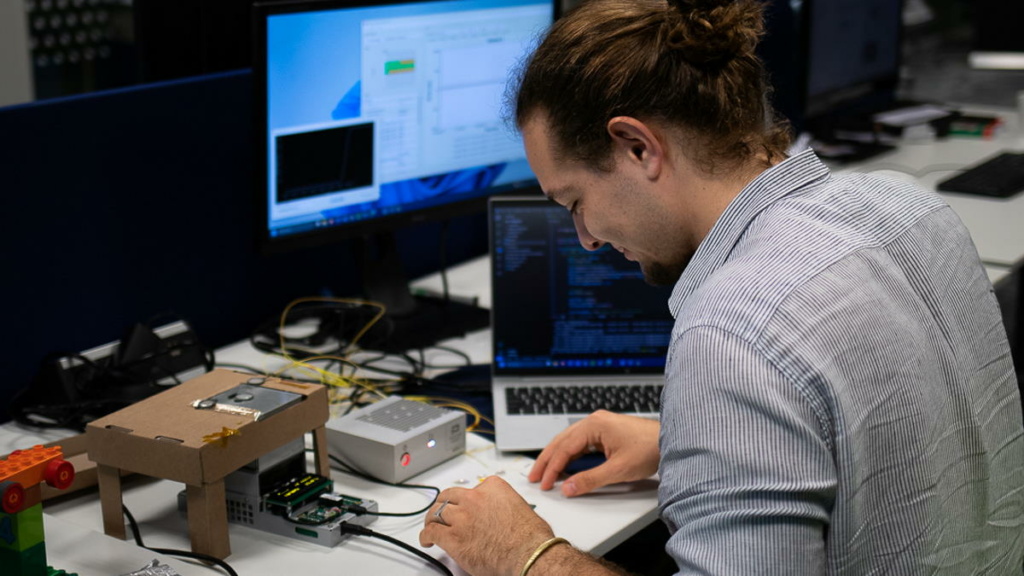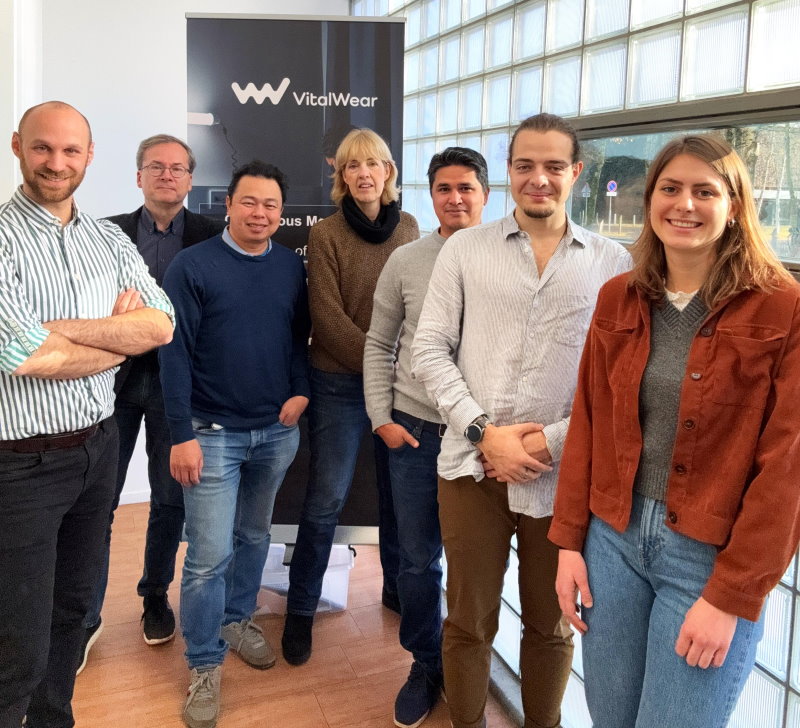
When the pressure mounts: Eindhoven’s Vitalwear takes on bed sores
It’s a curse for anyone bedridden: the pressure ulcer. More commonly known as bed sores, these damaged patches of skin and underlying tissue are the result of the affected area being under pressure for a long time. Prevention is straightforward but labor-intensive: patients need to be repositioned regularly so as to distribute pressure more evenly across the body over time. This is typically a one-size-fits-all type of policy: all at-risk patients are inspected and turned over on a regular schedule, as reliably assessing the immediate risk for a specific patient to develop a pressure ulcer is currently not possible.
Eindhoven’s Vitalwear is working on a solution. By integrating fiber-optic sensors in bed sheets, the startup is looking to detect early signs of the formation of pressure ulcers. This would allow for more individualized repositioning schedules in hospitals, saving the nursing staff lots of time that can be used more productively, while at the same time helping reduce the number of pressure ulcer cases.
Pitching the concept among experts in the field got an overwhelmingly positive response. “These people are very busy, they have no tolerance for nonsense. But they all picked up the phone and told us that they would be very interested if we could make this work,” says Eric Thelen, a former executive at Philips Healthcare and co-founder of Vitalwear. And so Thelen and his business partner Kostas Voutyras, a physicist with experience in integrated photonics and metrology, got to work.
Clever algorithms
Vitalwear’s core technology is available off-the-shelf. In fact, it’s Alkmaar-based optical fiber sensing specialist Photonfirst that came up with the idea of combining optical fibers with textiles and is one of the investors of Vitalwear, which also recently signed a loan agreement with integrated-photonics accelerator Photondelta. Photonfirst’s optical fibers are inscribed with microstructures called Fiber Bragg Gratings (FBGs), which partially reflect light traveling through the fiber. As the fiber is subjected to strain, a temperature change or another external influence, the wavelength of the reflected light changes proportionally. By measuring this shift, the strain or temperature changes can be quantified with unparalleled accuracy. Both parameters are key for pressure ulcer detection.
Vitalwear’s first challenge is to integrate the fibers into bed linen in such a way that it can be easily cleaned and sterilized without degrading the sensors while maintaining comfort and leaving the likelihood of pressure ulcers unchanged. “The fibers are robust and thin, so we’re confident we can seamlessly integrate them in a textile using well-known production methods. We’ll be working with partners on this aspect,” says Voutyras.
Next, the output of the extensive sensor network in the bed sheets needs to be translated into useful information. “This isn’t merely about detecting pressure in the same spot over a particular period; we want to measure actual changes in the patient’s skin that point to pressure ulcer formation. Decreased blood flow would typically result in a lower skin temperature, whereas inflammatory processes should increase it,” Thelen explains.
“It’s a complex measuring environment from which it’s challenging to extract useful information. We’ll need robust data processing algorithms to clean up raw data and clever models to zoom in on the phenomena we’re interested in. But we already have some good ideas on how to handle that,” adds Voutyras.

Wrote the book
Together with a group of consortium partners, who provide expertise across a broad range of relevant topics ranging from high-tech textiles to data management and wound care, Vitalwear was recently awarded an EFRO OPZuid subsidy project to develop its minimum viable product. In the consortium, Vanderhoekphotonics from Vlaardingen brings in many years of experience in the core optical fiber sensing technology and its applications. Eindhoven-based Interfil connects the project to a large network of experts on technical textiles and textile integration technologies. Orikami from Nijmegen expands its commercial solution to facilitate the processing, integration and management of the data together with the clinical user interface. Oisterwijk-based Q Care contributes clinical expertise in wound care and pressure ulcer prevention and facilitates the testing of the solution in nursing homes.
In 2025, the team intends to validate its solution with healthy volunteers. After medical certification has been achieved, tests with at-risk patients can commence, ultimately leading to a clinical trial. For this trajectory, Vitalwear will be working with world-renowned experts, some of whom literally wrote the handbook on pressure ulcer management. If all goes well, the startup’s high-tech systems will be introduced to the market by 2027.
This article was written in close collaboration with Photondelta. Main picture credit: Vitalwear





